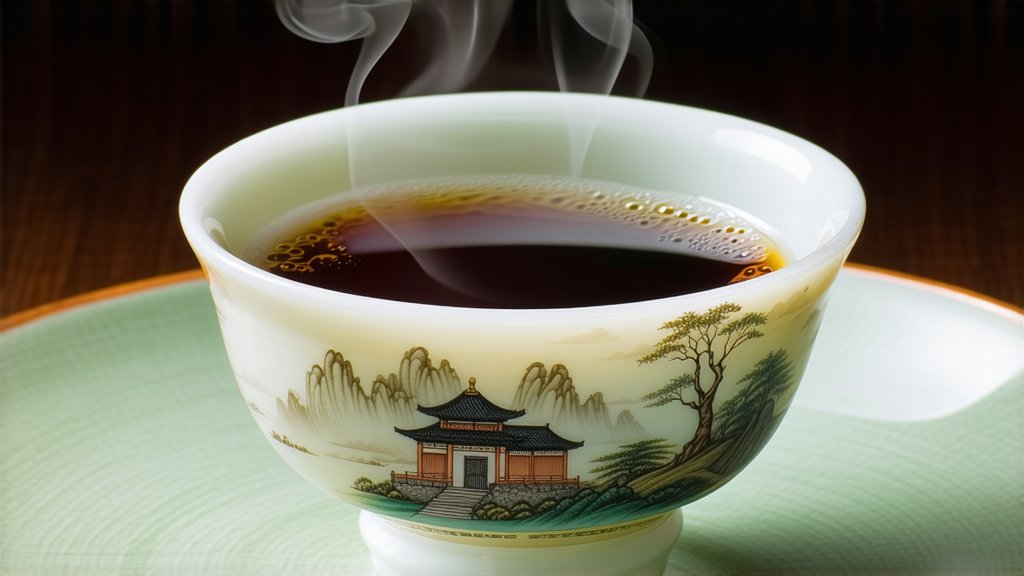
Keemun black tea, hailing from the picturesque Qimen County in Anhui Province, China, stands as a quintessential representation of Chinese tea culture. This exquisite variety of black tea is not only renowned for its rich flavor profile but also holds a significant place in the history and heritage of tea making in China. In this article, we delve into the historical roots, varieties, meticulous production process, and nuanced art of appreciating Keemun black tea, aiming to provide international readers with an in-depth understanding of this revered tea.
Historical Background
The origin of Keemun black tea traces back to the Tang Dynasty (618-907 AD), although it gained prominence much later during the early 19th century. The name 'Keemun' is derived from the transliteration of the Pinyin "Qiméng," which means "raised expectations" or "high hope." This reflects the aspirations of the tea producers who aimed to create a tea that would rival the finest teas of the world.
During the Qing Dynasty, Keemun tea became particularly popular due to its unique flavor and aroma, earning it the nickname "Prince of Teas." It was during this period that Keemun black tea found its way to Europe and North America, where it quickly garnered a loyal following among tea connoisseurs.
Varieties of Keemun Black Tea
Keemun black tea encompasses several sub-varieties, each with distinct characteristics:
-
Keemun Hao Ya (Keemun Superior): Often considered the pinnacle of Keemun black tea, Hao Ya features tightly rolled leaves with golden tips. It boasts a smooth, full-bodied flavor with a hint of orchid fragrance.
-
Keemun Mao Feng (Keemun Fur Peak): Named after the famous green tea of the same name, this variety is known for its slightly more robust flavor and a sweeter aftertaste. It is often enjoyed by those who prefer a stronger brew.
-
Keemun Xiang Spiral (Fragrant Spiral): This variety is noted for its tight spiral shape and pronounced aroma, reminiscent of fresh flowers and honey. It offers a delicate yet complex flavor profile.
Each of these varieties showcases the diversity and sophistication inherent in Keemun black tea, catering to different palates and preferences.
Production Process
The production of Keemun black tea is an intricate process that involves several stages, each contributing to the tea's distinctive qualities:
-
Withering: Freshly harvested tea leaves are spread out in a well-ventilated area to allow them to wilt. This step reduces moisture content and prepares the leaves for further processing.
-
Rolling: The withered leaves are then rolled either manually or using machines. This action breaks down the cell walls, releasing enzymes that facilitate oxidation. Rolling also shapes the leaves and helps extract their essential oils.
-
Oxidation: The rolled leaves are spread out again to undergo controlled oxidation. This stage is crucial as it determines the tea's flavor, color, and aroma. Depending on the desired outcome, oxidation can last anywhere from several hours to a full day.
-
Fixation: To halt oxidation, the leaves are exposed to high heat, usually through pan-frying or steaming. This step preserves the tea's flavor and prevents over-oxidation.
-
Drying: Finally, the fixed leaves are dried to reduce moisture content further and enhance their shelf life. Drying can be done in various ways, including air drying, oven drying, or sun drying.
Throughout this meticulous process, skilled artisans carefully monitor each stage to ensure the highest quality of resulting tea.
Appreciating Keemun Black Tea
To fully appreciate Keemun black tea, one must engage in the traditional Chinese tea ceremony, which emphasizes mindfulness and tranquility. Here’s a guide to the proper way of appreciating this exquisite beverage:
-
Preparation: Start by selecting high-quality Keemun black tea leaves. Use about 3 grams of tea per 150 ml of water. Rinse the tea leaves briefly with hot water to awaken their flavors and discard this initial infusion.
-
Brewing: For subsequent infusions, pour hot water (around 95°C or 203°F) over the tea leaves. Allow the tea to steep for about 2-3 minutes for the first infusion, increasing steeping time slightly for each successive brew.
-
Aroma: Before taking your first sip, take a moment to inhale the aroma of the brewed tea. Note any floral, fruity, or woody notes that arise.
-
Tasting: Sip the tea slowly, allowing it to coat your palate. Pay attention to the tea’s body, flavor profile, and finish. Keemun black tea typically offers a balanced combination of sweetness, astringency, and complexity.
-
Observation: Observe the color and clarity of the tea liquor. A well-brewed Keemun black tea will exhibit a bright, amber hue.
By following these steps, one can truly savor the depth and richness of Keemun black tea, experiencing firsthand the artistry and craftsmanship that define this exceptional tea.
In conclusion, Keemun black tea is more than just a beverage; it is a testament to the rich cultural heritage and masterful techniques of tea making in China. From its storied history to its diverse varieties and intricate production process, Keemun black tea continues to captivate tea enthusiasts around the globe. Whether you are a seasoned tea drinker or a curious newcomer, embracing the tradition and ritual of enjoying Keemun black tea offers a profound connection to centuries of Chinese tea culture.